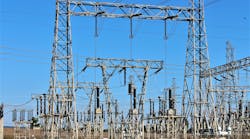In the midst of a heat wave following power outages to millions from storms that battered the eastern seaboard and mid-Atlantic regions on June 29, the National Electrical Manufacturers Association underscored the importance of installing smart grid technologies to reduce power outages and the role government can play in expediting the improvements.
“When it comes to power outages, we would all like to see a few things: quicker identification of the problem, routing around problem areas, and expedited resolution,” said Evan R. Gaddis, president and CEO of NEMA. “Integrating currently available smart products into the grid can accomplish these objectives today.” Smart grid products are self-healing for the grid, facilitating automated fixes. These state-of-the-art systems sense failures on the grid and automatically reroute power safely to consumers. While the grid is being reconstructed, power is able to flow through an alternative pathway. Smart meters—one of many available products—allow utilities to quickly identify outages without waiting for people to call in. Smart meters not only speed up restoration, but prevent unnecessarily jamming up phone circuits. Many households that lost power following the devastating storm could have been restored faster if smart relays and breakers were in place to automatically reset. These and other smart grid technologies include products that not only transfer electricity in more efficient ways, but also communicate with other products on the grid, reducing the delay time required for restoration crews to arrive in affected areas. “Practical and progressive action can be made to broaden the use of smart grid products,” said Gaddis. “Addressing these needs now will allow utilities to better serve customers in the years ahead.” Tax and regulatory policies geared toward advancing grid investments would make the electrical grid more reliable, secure, and efficient. According to NEMA, tax laws need to be changed to allow utilities to more quickly upgrade outmoded, but long-lived technology with 21st century smart products. This includes modernizing depreciation schedules so they more closely match the useful life of grid components, equipment that’s rapid technological advancements are better preparing the grid for weather events. On the regulatory side, state utility commissions should consider adjustments to rate schedules, facilitating the installation of smart grid components. Additionally, the transmission network should be optimized to improve safety and reduce uncertainties and cost, NEMA said. Voice your opinion!
Voice your opinion!
To join the conversation, and become an exclusive member of T&D World, create an account today!
Latest from Smart Grid
Latest from Smart Grid
Data Analytics
Smart Grid’s Big Data And Granularity
Jan. 11, 2024

